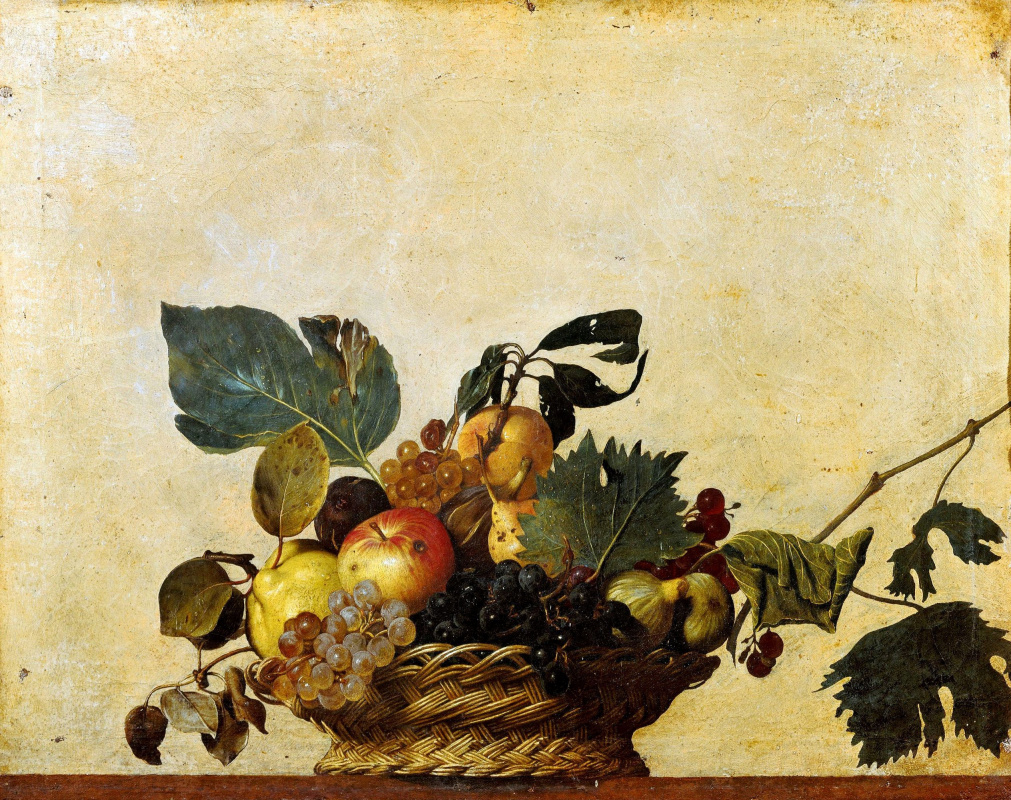Fruit basket
Description of the artwork «Fruit basket»
Michelangelo Merisi da Caravaggio painted The Basket of Fruit in the late 16th and early 17th century (various art historians date it to 1596th, 1598th or 1601st). One way or another, this work is often called the first still life in European painting. The primacy of this is not indisputable - for example, Jacopo de Barbari created the so-called "Munich still life" much earlier, but in principle until the beginning of the XVII century images of flowers, fruit, game, etc. were only elements of portraits or genre scenes.
Caravaggio's work corresponds to the name of the genre literally. In this still life (from the Italian natura morta, "dead nature"), the artist depicted the death and finitude of all living things. Faithful to his principle of observation of nature, Caravaggio reproduced with photographic precision the worms on the side of an apple, rotten and wrinkled grapes, burst overripe figs, and rotted and insect-damaged leaves. Some researchers of Caravaggio's work think that in this canvas the artist not only touched upon the theme of transience of life and beauty, but also created an allegorical representation of the Church, in the bosom of which there are both the righteous and the sinners.
Basket of fruit, depicted against the smooth wall, looks three-dimensional and monumental. It stands on the table, the edge of the basket even slightly protrudes over the edge of the tabletop, and it looks as if it is about to "fall" from the canvas. This technique - the placement of the object as close to the viewer - Caravaggio used in many of his works.
At the beginning of the 17th century, the Basket of Fruit was in the collection of Archbishop Federico Borromeo of Milan. In 1618, the archbishop gave his rich collection of paintings and sculptures to the Pinacoteca Ambrosiana. There the famous still life is to this day. However, for a long time "Basket of fruit" referred to the Dutch school of painting, and only at the beginning of the twentieth century art historian and master of attribution Roberto Longhi proved the authorship of Caravaggio.
In the 1980s Italy issued a 100 thousand lire banknote. On one side of the banknote is a portrait of Caravaggio and a fragment of his painting "Fortune Teller", on the other - "Basket of Fruit".
Michelangelo Merisi da Caravaggio died in 1610 in the town of Porto Ercole and was buried in the local cemetery. Exactly four centuries later a group of scientists found the artist's grave and identified his remains. In 2014 Caravaggio's ashes were reburied with honours. The monument erected decorated with a fruit basket.
Author: Martha Berg



